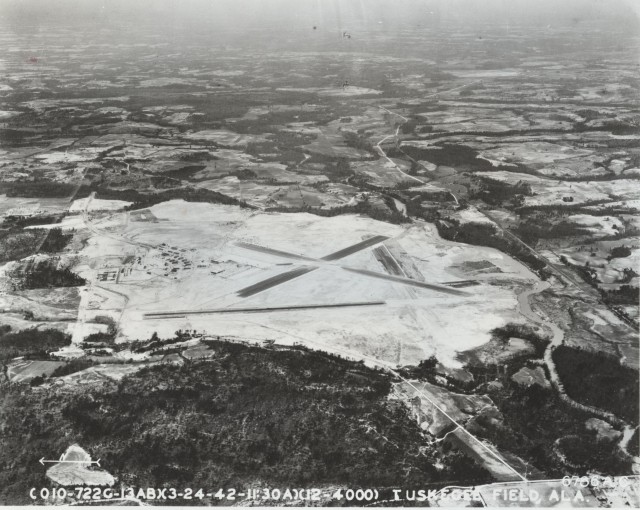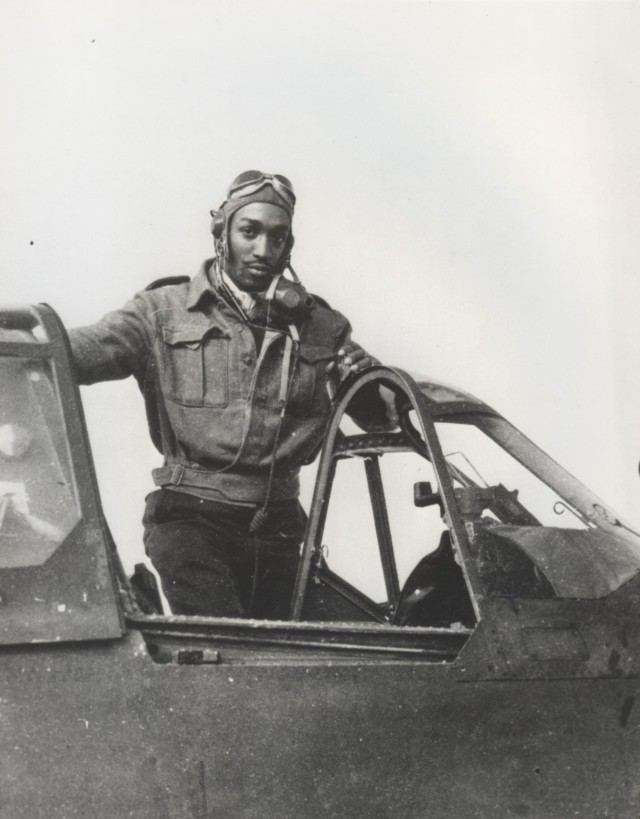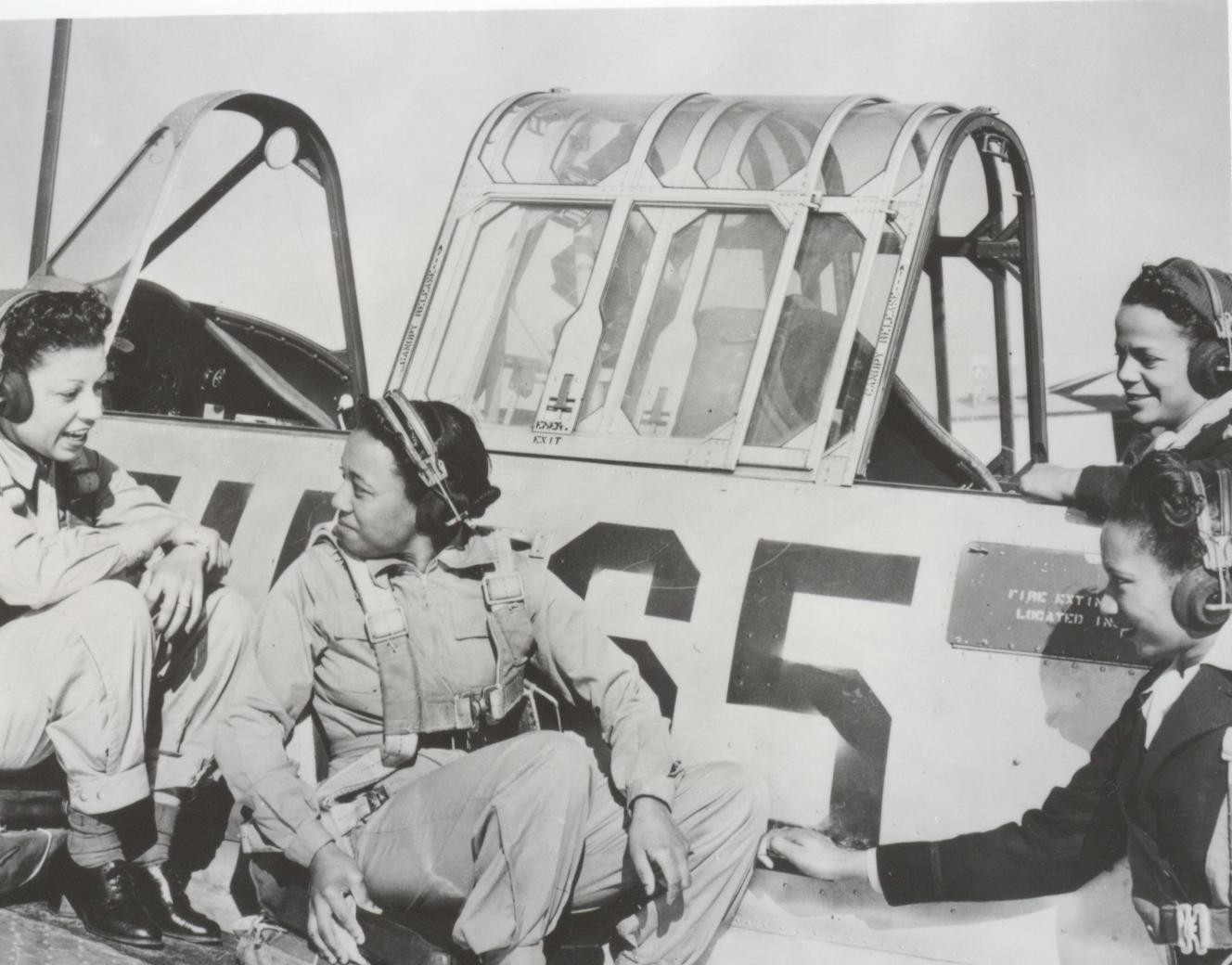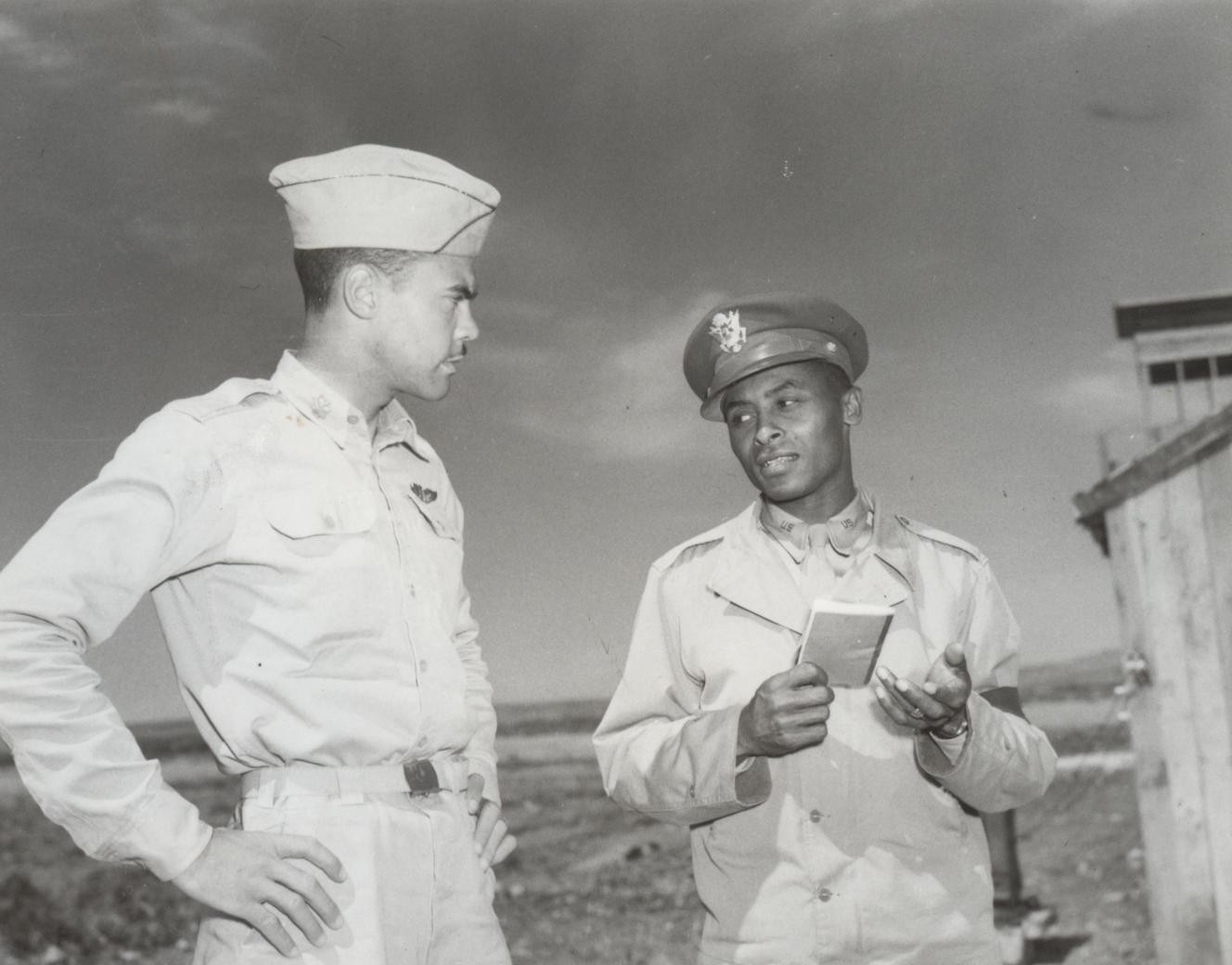The 99th Fighter Squadron went to North Africa in April and flew its first combat mission against the island of Pantelleria on June 2, 1943. On June 9th, a flight, led by Lt Charles Dryden was attacked by enemy aircraft. Lieutenants (Lt.) Willie Ashley, Sidney P. Brooks, Lee Rayford, Leon Roberts, and Spann Watson engaged the German fighter planes. Although the Americans lacked combat experience, they maintained offensive focus, forcing the enemies to retreat. The Allies' continued and persistent air assaults led to the surrender of the Italian island of Pantelleria on 11 June, 1943. One month later, Lt. Charles B. Hall scored the first aerial victory by a Tuskegee Airman by downing a Focke-Wulf (FW) 190.
The Squadron had been formed on January 16, 1941, when the War Department announced the formation an African-American combat fighter unit. The squadron was created from graduates of the flight training program conducted at the Tuskegee Army Air Field and in conjunction with the Tuskegee Institute, Alabama.
Thus began a new experiment of diversity in the U.S. Army. The story of the Tuskegee Airmen is one of defying the odds, overcoming racism, and performing superbly in combat. All the personnel in this outstanding unit were African-American, from the ground crew to the combat pilots.
The triumph of the Tuskegee Airman, an original Horatio Alger story of Army history, is an enduring tale of African-Americans aiming high and achieving greatness. The airmen, quite literally, smashed through an aerial glass-ceiling and in heroic fashion, displayed the skills and courage of African-Americans. Their efforts led the way in preparing the United States Army for the cultural and societal changes to soon come, leading to greater opportunities for all of our citizens.
The airmen reached new heights in 1943. The unit would achieve a distinguished operational record. They were also pioneers in improving race relations within the armed services, though it would be another decade before true integration was launched. The Tuskegee Airmen set an example of dedication and service for the Army and society.
On March 29th, 2007, the Tuskegee Airmen were awarded the Congressional Gold Medal, the most prestigious honor presented by the United States Congress.














Social Sharing